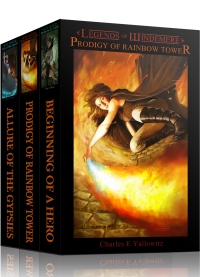
Google Image Search
This is what caused me to think up this week’s topic: IN MEDIAS RES. I’d never heard of it even though I’m sure I’ve seen it. This is very popular in film noir, but it shows up in plenty of other mediums. So, what is it?
In medias res is when a story starts in the middle of the action. Typically, it is an action section that goes for a bit until the previous events can be shown. This helps in drawing in a reader and making them very curious. For example, Odyssey starts with Odysseus captured by Calypso and he tells her his adventures. This storytelling is what shows us everything that happened prior to him becoming a captive. Eventually, the story catches back up with the beginning and then it proceeds into the final act. So, you’re really switching Acts 1 and 2 around here.
As you can see, the events that happened prior to the beginning need to be explained in some fashion. If you only do it with an info dump then your middle will be more of a true beginning. So, you can utilize flashbacks that are being told through the point of view of your protagonist. In the example above, it’s Odysseus telling his story to Calypso. Having the protagonist tell the story to another person is fairly common. Other ways to do it is simply having them remember stuff that led up to their current situation. Cartoons and movies love that one. Many times you get the scene freeze and a comical ‘I bet you’re wondering how I got here’ voiceover. It still works as a transition.
In medias res can work pretty well for either plotters or pantsers. The former can make their outlines and simply move a few things around. The story still works and they now have an initial goal to reach before heading for the finale. With a pantser, they don’t have to make a plan, but now they have a general direction to go. This can create some level of reigning in to avoid going so far off the plot that the story doesn’t hold water. Now, you can wander off and the readers will be okay with it since they know you’re heading in the right direction at some point.
While this technique is mostly found in epics and film noir, you can find more mainstream versions of it. Two examples are:
- Deadpool– Breaking of the 4th wall can lead to in medias res. The action starts with him having his powers and going after targets. Then, he starts talking to the audience and this leads to the flashback/origin part. Eventually, the story catches up and we move into the final act. This is a fairly common method since comedy and talking directly to the audience helps with the transition.
- Star Wars: A New Hope– I did read that there are some debates on this one. I’m leaning towards maybe, but not because it’s labeled as Episode IV. You can do that and never touch on the previous episodes for influence. I mean, we spent how many years with only Episodes IV-VII before I-III came out? No, the reason this movie can be In Medias Res is that you start right in the action with Princess Leia trying to get away with the Death Star plans. The events of the movie have already begun and are at a higher pitch than if we began with them doing the actual theft. Yet, we never really flashback or do anything to jump to that previous part of the story. We aren’t counting ‘Rogue One’ here. You technically have the middle of the Skywalker Saga, but the start of its own story. So, things can get shaky here.
It is surprising how often we see this and never think twice. Makes me wonder how often we do this in casual storytelling. Not actual writing, but like when we tell a person about an experience or idea. Can we get away with starting in the middle of that when it’s not really a story? It’s just relaying an idea. Might be going in the wrong direction at this point.
What do you think of in medias res? Ever use it?





Great topic! The action of two of my WIPs starts in the middle with one character just after a beat down and another climbing a wall after threatening a beat down to someone else. Hmm. I’m sensing a pattern here. 🤔
LikeLike
Wait. Why did this one go live? This was supposed to be on July 27th. Dammit!
LikeLiked by 1 person
As I mentioned before, I usually start a story in the middle. 😁 The first Avengers movie and Batman Begins also were good in that they started in the middle of the action. I also thought a semi-recent movie adaptation of Jane Eyre was particularly effective in that it started about three fourths of the way through the action of the book and then told the story backward from that scene. I think the director took a page from the nonlinear storytelling of Batman Begins. The recent Little Women (featuring Timothée Chalamet) also started toward the end of the book and jumped back and forth in time.
LikeLike
Think I have seen it more often in movies. Though, I don’t remember ‘The Avengers’ doing it. I thought it started with Loki appearing and causing his initial trouble. Then everything was what happened afterwards.
LikeLike
Loki is the inciting incident, but each person was already on a mission somewhere. The fact that the tesseract was there in the first place was because that story started in a previous movie.
LikeLike
I guess that works. MCU is a weird one with all the connections.
LikeLike
I like it but there is a caution. You lose some tension, because readers automatically know the character will survive up to the point of the flashback. I have one loose story in my head that will use it if I ever decide to write it. With Deadpool being more shtick comedy it’s not such a big deal.
LikeLike
I think with middle, you can create some immediate tension. While the audience knows the main character will live to that point, they don’t know if they’ll go beyond. I think most think the MC will live until near the end too, so it could be a minor sacrifice.
LikeLiked by 1 person
My loose plan is to introduce a lot of other characters during the flashback that may or may not survive. It’s a WWII story, so I don’t know how popular those still are.
LikeLike
Not sure. WWII always seems to find an audience though.
LikeLiked by 1 person